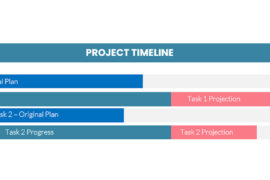Here’s a number that I heard recently that, although it didn’t surprise me, is a shocking number to deal with. It turns out that there are an estimated 40 million people on the planet who use Excel for project management. As a percentage of the total number of people who must use PCs it’s probably not a huge number but as a percentage of the total number of dedicated project management applications sold, it makes Excel the most popular project management product on the market today. You have to wonder what the attraction is.
When you look at project management packages in the market it becomes apparent quite quickly that they are feature-rich and require some level of expertise to take advantage of. How many of us are using less than 25% of the functionality of our pm software? Have pm software vendors missed the mark? Are packages like Microsoft Project too complicated to be successful?
Not that long ago, pm software vendors used to think that the fundamental problem in the market was lack of training. If only end-users were intelligent enough to understand what we could do for them, they’d surely implement an integrated high-end system. Training, we all thought, was the best answer. The market taught us differently. It turned out that users didn’t want to be trained to use more complicated systems; they wanted systems that were easier.
The first wave of this has really reached its maturity level. The domination of Microsoft Project as a desktop tool was largely successful because of how quickly end-users could produce their first results with the product.
The next wave of pm software is underway. Now, enterprise systems from numerous vendors are splitting the end user experience between a fully functional desktop tool and a much, much easier to use web-based interface. It’s true that these systems involve more work to deploy but the end-results can be in an organization which must manage multiple projects with numerous resources The newfound interest in the Project Management Maturity Model lends itself perfectly to these systems as the model is all about moving from ad-hoc project management to an integrated process.
But this leaves out the 40 million people using Excel. There’s still a huge market for project managers who are most effective when working in an ad-hoc manner and have no desire to operate in an integrated view. While meeting with Fujitsu Consulting last week, one of their managers coined the term “Agile” project management. I very much like the concept. There is no doubt a significant market for a project system that is even simpler than Microsoft Project Standard. It would have to be low-cost, stunningly easy to use would have to be able to go from insert disk to useful output in a period measured in minutes, not weeks. I know there are already products trying to target this market (Milestone comes to mind.) but these 40 million+ users are still not finding something that makes a sensible return on investment for them and I’m sure we’ll be seeing more attacks on this end of the market over the next year or two.
Now, lest someone worry that I’ve given up on my long-standing interest in enterprise project management, fear not. But I’ve always believed that systems should serve a purpose and this category of ad-hoc project management is still not being adequately served. Enterprise project management and moving to an integrated system only makes sense if it returns sufficient value on the investment of time and effort to deploy it.





